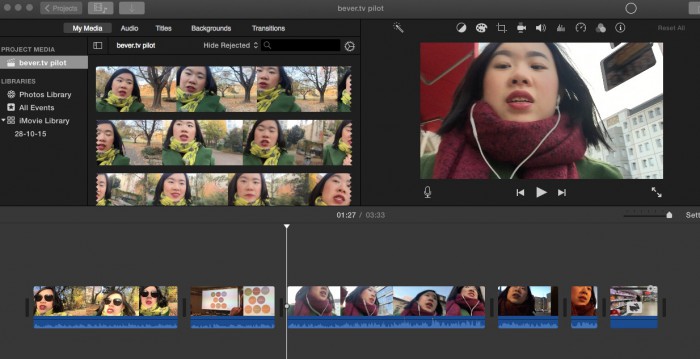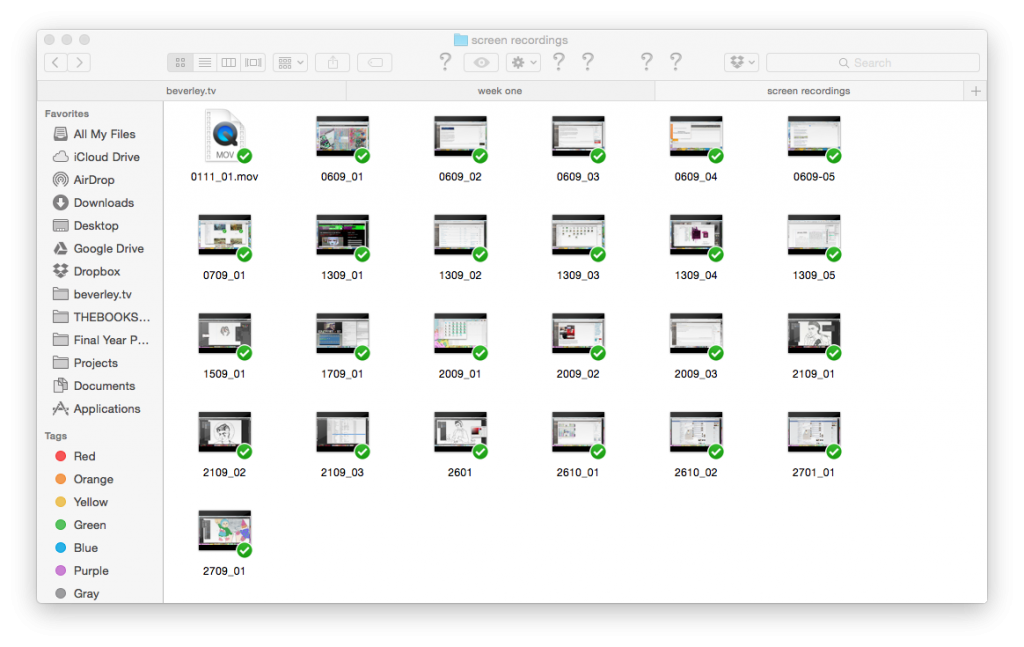The title of my project is beverley.tv.
Through this project, I want to rethink the concept of the webcam in our everyday lives. In Steve Dixon’s essay, the Subversion of Surveillance, the webcam is described as “a camera that takes pictures at set intervals, that can range from 15 times per second to once per hour, then instantly transmits the images to a web server.” The concept embodied by this definition has changed over the years, shaped by our relationship with social networks and the camera on our mobile phone. Any images that we capture can be shared with an audience and establish an immediate response.
Our relationship with social media is also a source of recent debate as well. These platforms give us a chance to form a more desirable and presentable persona, the one we want others to associate us with, through careful curation: selective topics to share on Facebook, types of photo filters used, and so on. Having someone like our post is a kind of validation: that the persona that is being portrayed is likeable/desirable. Such a persona is also referred to as our public self: an online avatar that we create that only a very small percentage of our private, true self can ever embody. That said, this project is an exploration on how both identities can be straddled, using a combination of self-broadcasting techniques.
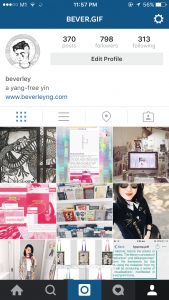
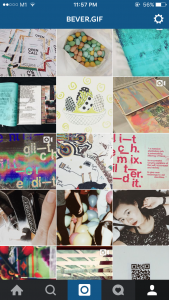
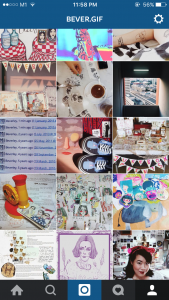
Here’s a screenshot of my personal Instagram account. I use Instagram to share my artworks with people and over time, I meet other Instagram users who follow my account as they enjoy my works. Because of this, I become conscious of ensuring that my feed consists primarily of my works. I am also conscious of presenting myself as an artist on any online platform, and I would like to be known as that.
Through this project, I would like to open up the process of my art making, in an intricate manner. For me, the process of making art is personal and meditative: very few people have seen me drawing or writing, and often the presence of having someone else in the room breaks my concentration as i often feel compelled to talk to them, and i will become distracted. Art making is way for me to savour my solitude and also allow myself to have a quiet space to create something. By broadcasting my process “live”, I hope to redefine the usage of the modern-day webcam, and allow for an engaging and introspective discussion with the virtual community.
As an artist, I find that documenting the process is just as important as making the work. I am a firm believer in the saying that it’s the journey that’s important, and not the destination. Documenting my process at each step of the way is akin to making sketches in a notebook: it allows me to go back and see what I have done, what works and what didn’t.
The concept of private vs public is rarely explored in the realm of art, particularly the relationship between the artist and the viewer. Through my work, I also want to highlight that making mistakes is part of the process. A lot of times, most creatives tend to keep this part of the art-making process hidden and not shown to the public. There are also other habits that creatives keep hidden because they feel embarrassed about it. Through my work, I offer an uninhibited view into the process of making a piece of work.
My broadcast will combine two kinds of filming and recording to document my artistic process: using the mobile application Periscope and Quicktime player’s screen recording function. The two filming methods is a contrast against each other, inspired by the concept of private vs public. Periscope works by using your mobile camera to film live footage of your surrounding and sharing it with an international audience, whoever happens to be online and tuning into your channel. It also includes a live commentary function, where you can see viewers responding to your broadcast and giving “hearts” in appreciation. Quicktime’s screen recording is an in-built function that records your actions on the screen. The screen recording records all the actions that take place on the screen. I use it as a form of broadcast as it offers a private and genuine way of documenting the art process, as it records all the subtle actions I do on-screen as part of the work: whether it’s a pause during typing, backspacing, deleting — these are all little details that offer a glimpse of the thought process, and how everything comes together to form a final piece of work.
The project is also influenced by the reading ‘Webcams: The subversion of Surveillance’ by Steve Dixon. The article explores the use of webcam as an electronic eye to our personal lives, and potential exploitation of privacy and intimacy. The reading also uses an example of a group of artists who use the webcam to document their processes, turning their studio into a Web installation. The webcam is also described as a camera which produces “low-resolution, grainy” footage and it’s static effect also lends it a stern, surveillance quality.
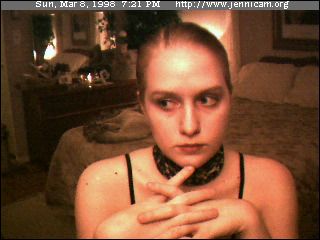
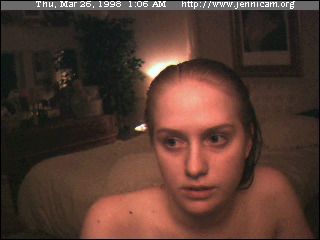
Jennicam (1997)
Jennifer Ringley’s work Jennicam is an inspiration for my project. She lives her life out in front of the camera, and it records her activities from the mundane to the intimate. My takeaway from the work is that her documentation of her life is genuine, there are no filters that help to dictate any sense of aesthetic in her work. It is an unintentional form of autobiography. Her setup of her cameras also provide insights to her life through various perspectives, by setting up cameras in every room and from all angles. Even though some of these details are mundane and ordinary (snapshots of her eating, playing with her hair, etc), they are all part of a very natural narrative that we can get from her life, which I find quite a contrast to what we can do with the tools that we have with us today.
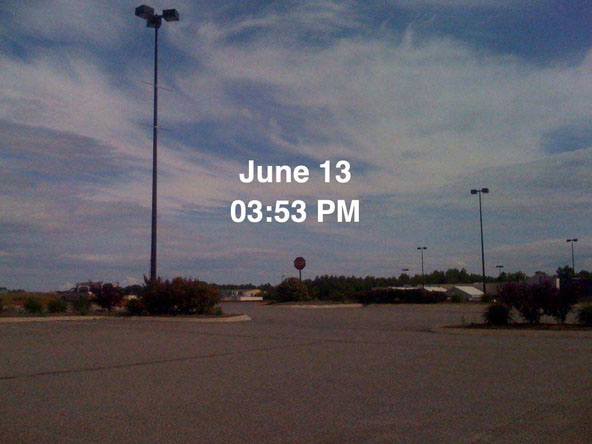

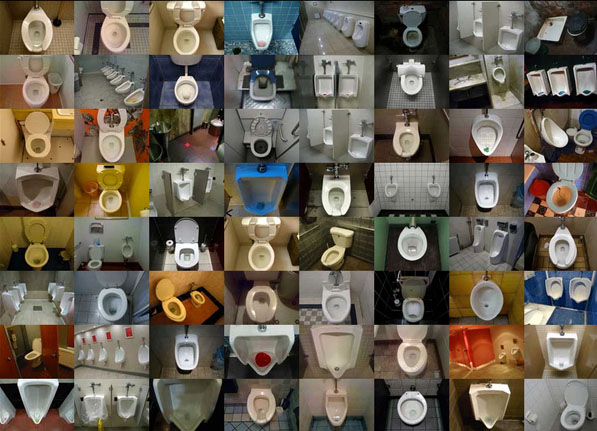
Hasan Elahi, “Tracking Transcience”
I am also using Hasan Elahi’s work as a reference for mine as his work address the tension between the public and private self. Tracking Transcience is a collection of screencaps and footage of his daily activities. He deliberately puts himself under surveillance, which itself also critiques the concept of surveillance: with all these complex methods of tracking down a person’s activities, does it really give away any clues on the identity of the person being tracked? I find this particularly relevant to my concept of how we use the modern day webcam and tools to document selective parts of our lives. In this ‘selfie’ era, this idea continues to appear in recent debates on how we trivialise our lives as a result of being too involved in our social media tools: by sharing everything in our lives but ourselves.
Through my project, I hope to use these tools to document my art process in a more constructive way, by expressing my identity as an artist, and to encourage an open discussion and sharing of other people’s processes as well.
